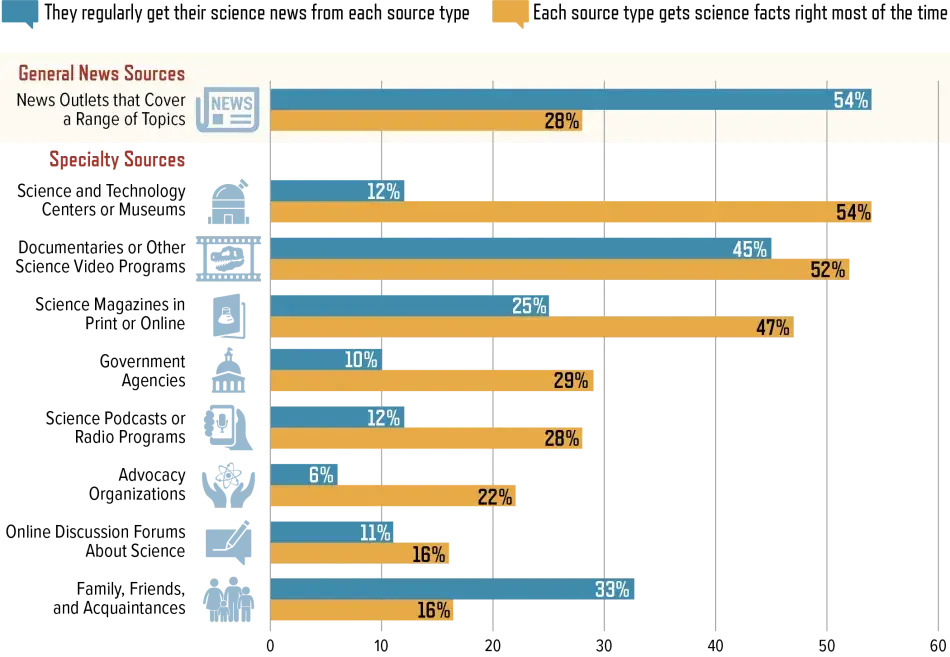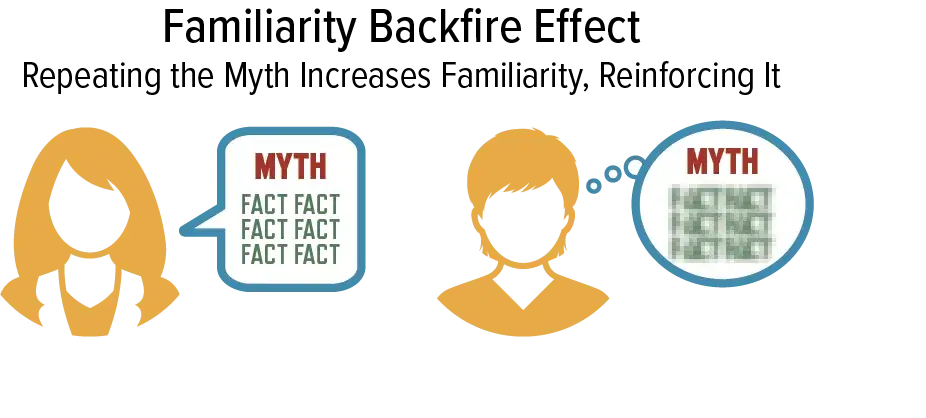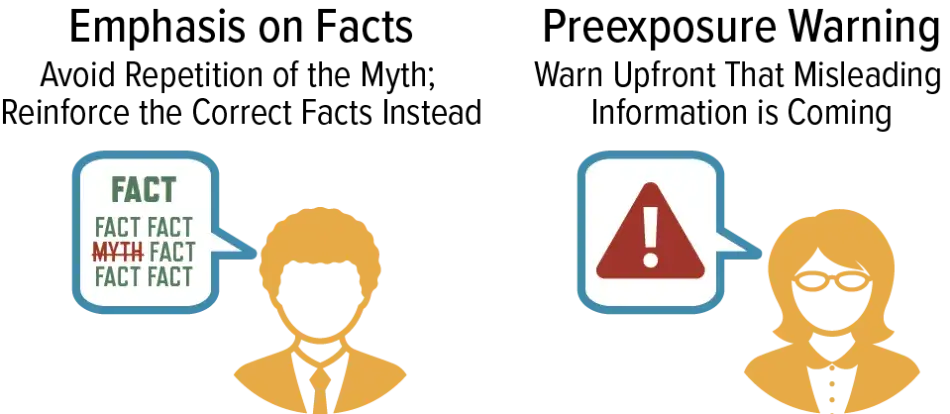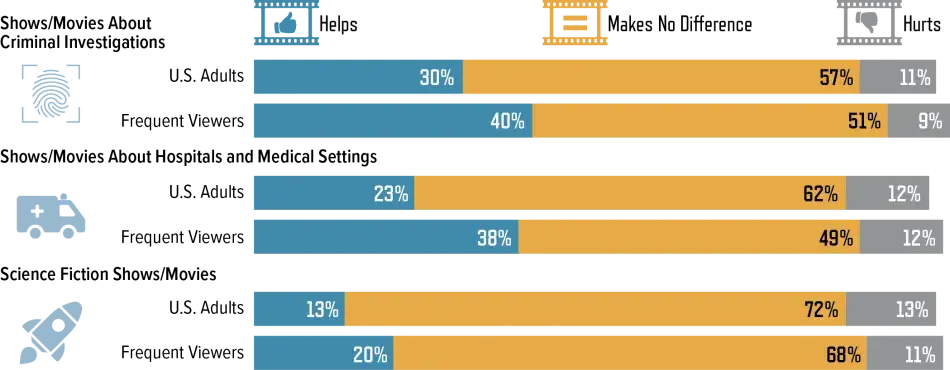Special Section: Science in Everyday Life
As noted in Perceptions of Science in America, more research is needed on how “various forms of news media, social media, and entertainment” influence trust in science. Despite the need for additional research, the everyday ways people interact with science can shape attitudes or improve understanding of science either on their own or by providing opportunities for extended dialogue or concomitant engagement experiences. This section highlights data from the Pew Research Center report on how people 1) obtain science news; 2) see science news on social media; and 3) watch science-related entertainment.
General News Outlets are a Common Source of Science News
Percentage of U.S. Adults Who Say . . .

Note: “Most of the time” combines those who said “almost all” or “more than half” of the time. Respondents who gave other responses on each question or who did not give an answer are not shown. Other source types rated are not shown.
Margin of error: +/– 1.6. Source: Cary Funk, Jeffrey Gottfried, and Amy Mitchell, Science News and Information Today (Washington, D.C.: Pew Research Center, 2017; survey conducted May 30–June 12, 2017).
Among science-related topics, Americans are most interested in news on “health” and “food and nutrition.” A 2017 Pew survey found that more Americans say they regularly get science news from a source that covers general news than from sources that specialize in science topics.55 However, people are more likely to believe that science-specific information sources, such as science museums or documentaries, get their science facts right most of the time. These data also agree with the National Awareness, Attitudes, and Usage study findings that science museums, zoos, aquariums, and natural history museums are more highly trusted compared with nongovernmental organizations (NGOs), state and federal agencies, and daily newspapers.56
Discussion and Research Considerations
People are regularly exposed to scientific concepts, new discoveries, and technological advancements as part of general news, social media, and entertainment. While there has been some research on this subject, this landscape is rapidly evolving. More research is needed on the impact of these developing sources and effective approaches for ensuring accuracy of scientific content. Moreover, continued research into the impact of negative narratives about science and effective approaches to addressing these narratives is necessary.
Evolving Information Sources
- What is the role of social media in disseminating scientific information and spreading misinformation?
- What role do online databases play in shaping perceptions and understanding of science? How accurate is the scientific information?
- How much scientific content originates from outside the United States? How does access to international science influence perceptions of science in the United States?
- What is the responsibility of search engines to vet information and provide guidance on which websites are the most trustworthy?
The Implications of Encountering “Bad Science”
- How do stories of fraudulent research influence attitudes toward science? What is the influence of stories on conflicts of interest on trust in science? What are the effects of these stories on both the specific field of research and general attitudes toward science?
- How should the scientific community respond to cases of bad science? What are the best practices for discussing these stories in the media?
- What are the long-term impacts of narratives such as “science is broken”? How does the framing of scientific discoveries influence perceptions of the scientific process and advancements?
Research Highlight: Applying the Cognitive Sciences to Communication
The field of cognitive sciences can provide insight into effective visual and verbal communication by studying how information is processed or spread within society. For example, data visualization studies can reveal areas of misunderstanding in particular presentations of quantitative information such as a connected scatter plot or dual-axis line graph.61 Of particular importance to the scientific community are recommendations into correcting misinformation on topics such as vaccines, climate change, and genetically modified organisms, on which the scientific consensus has been rejected by different populations of the public.62
Problem

Solution

Source: Adapted from Stephan Lewandowsky et al., “Misinformation and Its Correction: Continued Influence and Successful Debiasing,” Psychological Science in the Public Interest 13 (3) (2012).





